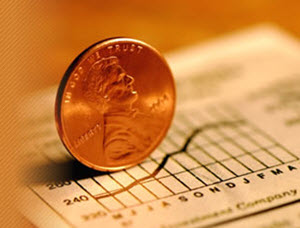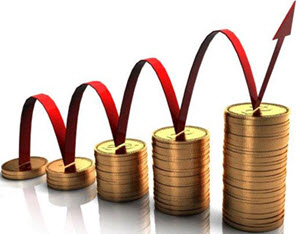 Penny stocks are common shares of small public companies that trade at low prices per share. Different jurisdictions have different definitions of what a penny stock is, and sometimes also different names for this type of low-price stock. In the United Kingdom, stocks trading below £1 are called penny shares.
Penny stocks are common shares of small public companies that trade at low prices per share. Different jurisdictions have different definitions of what a penny stock is, and sometimes also different names for this type of low-price stock. In the United Kingdom, stocks trading below £1 are called penny shares.
In the United States, the U.S. Securities and Exchange Commission (SEC) has a list of criteria that a stock must fulfil in order to be a penny stock, including trading below $5 per share and not being listen on any national exchange. You can find more information here: http://www.sec.gov/answers/penny.htm
Buying and selling penny stocks
Penny stocks tend to be traded over-the-counter, e.g. on the OTC Bullentin Board and OTC Link LLC. It is however also possible to buy and sell penny stocks on securities exchanges around the world. You can learn more about how to trade penny stocks here.
Volatility
Before investing in penny stocks, it is important to know that these stocks have a tendency to be highly volatile. Due to their low price, it is not as costly to manipulate them as it would be to manipulate more expensive stocks through practises such as pump and dump. This is especially true when the total value of all issued shares in the company is low (i.e. low market capitalization).
Pump and dump schemes for penny stocks
 Penny stocks, especially those that trade for less than £0.01 per share, are often thinly traded. A share that is thinly traded is exchanged in low volumes and often have a limited number of interested buyers and sellers. This can make the stock highly volatile, because once a trade do take place it can have a large effect on the price of the stock.
Penny stocks, especially those that trade for less than £0.01 per share, are often thinly traded. A share that is thinly traded is exchanged in low volumes and often have a limited number of interested buyers and sellers. This can make the stock highly volatile, because once a trade do take place it can have a large effect on the price of the stock.
Thinly traded penny stocks can become the target of people interested in manipulating the price of the stocks in order to benefit financially. A commonly used method is the so called pump and dump scheme. Stocks subjected to a pump and dump scheme are colloquially known as chop stocks.
In order to carry out a pump and dump scheme, the manipulator will first purchase a large amount of shares in a company (typically penny stocks). The manipulator will then artificially inflate the price by spreading rumours or other types of false or misleading information (this is the pump stage). Once the price has gone up, the manipulator will sell their shares and make a profit (this is the dump stage). The massive sell will normally cause the price of the penny stock to decrease rapidly, especially since the manipulators no longer have any incentive to keep pumping up the price of the penny stocks with their false information.
Earlier, pump and dump schemes would often rely on so called cold calls, where stock brokers would phone prospective buyers and entice them to buy penny stocks in the selected company. This still occurs today, but has been largely replaced by cheaper and more efficient methods made possible by the internet and mobile phones, such as posting false or misleading information in chat rooms, on message boards, on Twitter and Facebook, in e-newsletters and in e-mails (including spam e-mails) and in text messages sent to mobile phones. More sophisticated manipulators can also use false web sites, false press releases, etc to make the company seem more valuable.
The manipulator will often claim to have inside information about things that would have a very positive effect on the value of the company, e.g. a new drug that is about to be approved or a new patent that is about to be granted.
Eventually, the pumping can become a self-generating process where the price of the penny stock will continue to rise even if the manipulator stops spreading false information. Since the initial purchases made by hornswoggled investors have caused the stock price to rise, the stock will seem like a great investment to many inexpert investors. Also, more skilled investors that realise that a pump and dump scheme is taking place might want to buy shares in the company anyway, correctly or incorrectly believing that they will be able to sell before the dump takes place.
In many jurisdictions, pump and dump is considered stock fraud.
Short and distort
 Short and distort is another way of manipulating the price of shares to make a profit. Just as with pump and dump, penny stocks are especially susceptible to this type of manipulation.
Short and distort is another way of manipulating the price of shares to make a profit. Just as with pump and dump, penny stocks are especially susceptible to this type of manipulation.
In a short and distort scheme, the manipulator will first short sell a large amount of penny stock. During the next stage, the manipulator will spread false and misleading rumours in order to bring the price of the penny stocks down.
Once the stock price has decreased, the manipulator uses the money from the short sale to purchase a larger number of the penny stocks than what she needs to fulfil the short-selling contract. A part of the purchase will be used to fulfil the short-selling contract. What to do with the rest is up to the manipulator. She can chose to sell them for a profit right away, or she can hang on to them in the hopes of them increasing in value when she stops spreading negative rumours about the company.
This article was last updated on: August 25, 2014
